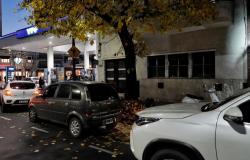The Hubble space telescope, which revolutionized astronomy with its discoveries since 1990, will retire with a smaller observation program, NASA officials reported on Tuesday (06/04/2024).
One of the three gyroscopes that control the direction the telescope points has become unstable in recent months, leading to intermittent “safe mode” episodes, most recently on May 24.
The space telescope entered a state of hibernation more than a week ago after the failure of the gyroscope, a device that had been failing for months and interrupting scientific operations.
NASA said Tuesday that attempts to fix it have failed and that it will operate with a single gyroscope, limiting its scientific capabilities.
Hubble will remain idle until mid-June and will not be as agile as before and will take longer to focus on targets.
The telescope will not be able to make as many observations, but it should be able to continue making discoveries for the rest of this decade and the next, according to officials at the US space agency.
“We don’t think Hubble is on its last legs,” said the telescope’s mission project manager, Patrick Crouse.
“After completing a series of tests and carefully considering our options, we have made the decision to transition Hubble from operational use to just one of the three remaining gyroscopes,” announced Mark Clampin, director of the agency’s astrophysics division. American spacecraft NASA.
The other gyroscope will be kept on in reserve for possible future use.
The transition, which should be completed by mid-June, will reduce Hubble’s efficiency in making scientific observations by 12%, going from 85 weekly orbits to 74, according to Crouse.
Over the course of a year, it will still be able to observe the night sky, but it will not be able to track objects that are closer than the planet Mars, although such targets have been rare, Crouse added.
NASA estimates that there is more than a 70% chance of operation with this configuration until 2035. At the end of the telescope’s functional life, the space agency plans to safely deorbit it or dispose of the instrument.
The telescope, named after astronomer Edwin Hubble, was launched in 1990 and operates about 515 kilometers above Earth.
Between 1993 and 2009, astronauts visited Hubble five times on repair missions.
jc (afp, ap)






